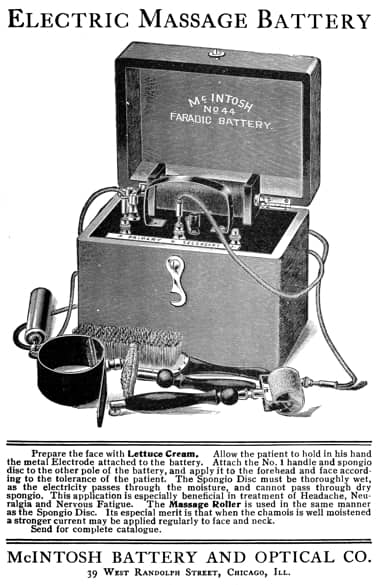When we want to encourage people into action, we often say we will ‘galvanise’ them. This phrase comes from the idea that a person’s general energy was tied to the flow of electricity through their body, and could be improved with a Galvanic battery.
Electrical therapies built an enormous mystique about them in the 19th century, with people believing that it could revive the dead (in Mary Shelley’s 1818 gothic novel, ‘Frankenstein’), and cure most illnesses. Women were significant consumers of electrotherapy because it was believed that women’s ‘nerve force’ could be damaged by menstruation, childbirth, excessive physical activity, and even reading and study, and so was used both to justify the myths of women’s inherent ‘weakness’ and fuel an industry for electrical therapies.
The Faradic and Galvanic batteries were the main devices used. Named for their inventors, Michael Faraday 1791 – 1867, and Luigi Galvani 1737 – 1798, they operated with either a continuous ‘DC’ current (Galvanism), or with an alternating current (Faradism), but both claimed similar therapeutic effects, from the destruction of tissue (today’s electrolysis, a form of Galvanism), reducing swelling, inducing analgesia, increase or decrease muscle tone, depending on the method of application (Savage, 1960).
The batteries had the advantage of being portable and carried a significant placebo effect, but they still fell into decline as people questioned the claims for their efficacy beyond immediate, local physiological change. They did, however, serve to give many therapists a conservative form of treatment at a time when the alternatives available to patients were often highly risky or toxic.
Description provided by Dave Nicholls of New Zealand.
References:
Savage B. 1960. Practical electrotherapy for physiotherapists. London: Faber & Faber.

